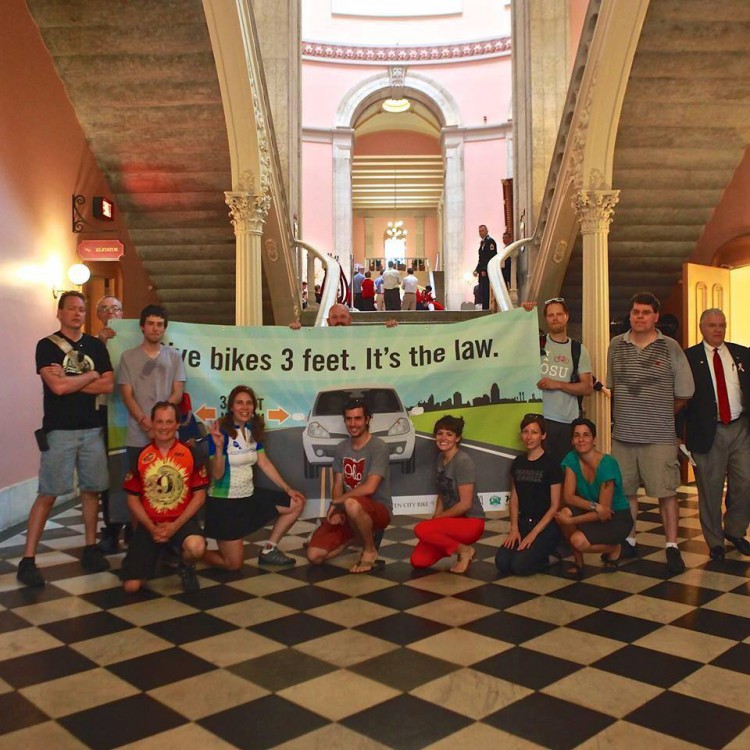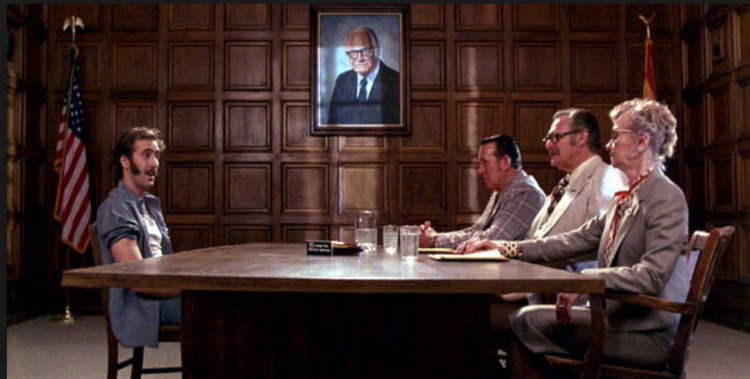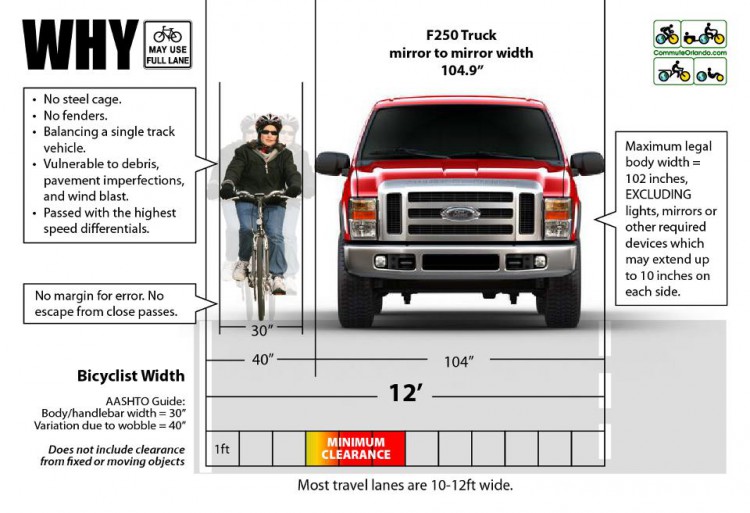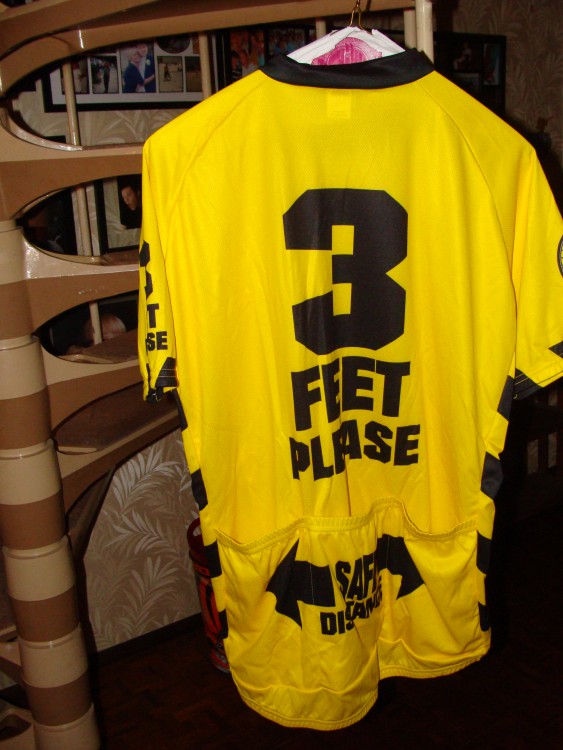Today – May 24, 2015 – the Ohio House passed House Bill 154 by a vote of 78-15. The bill now goes on to the Ohio Senate – hopefully, we’ll have success in the Senate and get the bill to the Governor before year’s end… or else we have to start all over again…
In 2013 the Board of the Ohio Bicycle Federation started the long, arduous process of getting a bill passed – our Three Foot Bill was introduced with fanfare, and without real opposition… On May 20, 2013 I testified in favor of the bill before the Transportation Committee. The original bill had 3 parts – a law requiring a minimum of three feet of space when passing a cyclist, a second provision which would allow cyclists to go through a red light if the signal detector failed to detect them and a third provision changing the definition of a “bicycle” to incorporate pedal driven vehicles with more than 2 or 3 wheels.
The latter definitional change was accomplished far more easily than we anticipated – it was incorporated into a budget bill and passed within weeks.
We felt that our presentation to the Committee on the other two parts of HB 154 went very well. We unfurled a copy of the Three Foot Billboard that was 11 feet x 5 feet …and then had to explain to the Committee that the car passing the bicycle over the double yellow line was, indeed, lawful and permitted under Ohio law. The OBF got the “Better Bicycling Bill” passed into law in 2006 and allowed slower moving vehicles to be passed over the double yellow… unfortunately… the Committee – the legislative committee dealing with traffic laws in Ohio – did not know this… so Step One was EDUCATION
———————————-What is the Current Passing Law?———————————-
I was not, initially, a fan of “X Foot” laws. I wasn’t sure they were all that “enforceable” and wasn’t sure they would be helpful. Then… I started researching and digging into current law, and found it to be completely unhelpful to cyclists. I determined in my mind that the Three Foot proposal we developed was a far better alternative to existing law.
Current law in Ohio says this:
4511.27 Overtaking and passing of vehicles proceeding in the same direction.
(A) The following rules govern the overtaking and passing of vehicles or trackless trolleys proceeding in the same direction:
(1) The operator of a vehicle or trackless trolley overtaking another vehicle or trackless trolley proceeding in the same direction shall, except as provided in division (A)(3) of this section, signal to the vehicle or trackless trolley to be overtaken, shall pass to the left thereof at a safe distance, and shall not again drive to the right side of the roadway until safely clear of the overtaken vehicle or trackless trolley.
(2) Except when overtaking and passing on the right is permitted, the operator of an overtaken vehicle shall give way to the right in favor of the overtaking vehicle at the latter’s audible signal, and the operator shall not increase the speed of the operator’s vehicle until completely passed by the overtaking vehicle.
(3) The operator of a vehicle or trackless trolley overtaking and passing another vehicle or trackless trolley proceeding in the same direction on a divided highway as defined in section 4511.35 of the Revised Code, a limited access highway as defined in section 5511.02 of the Revised Code, or a highway with four or more traffic lanes, is not required to signal audibly to the vehicle or trackless trolley being overtaken and passed.
———————————- WHAT is a “Safe Distance?” ———————————-
The current law says only that you have to pass at a “safe distance” – whether you are driving a dump truck and passing a Humvee or whether a Mini Cooper is passing a Beetle or whether an angry pickup truck driver is passing a bicyclist.
So what is a “safe distance?” In researching this topic I found NO cases – zero…none… zilch… – in the 200 year history of case law in the great State of Ohio defining this magical distance…particularly in the case of a car/truck passing a bicycle…
In practice, cyclists who have complained to law enforcement about very close passes by a motorists frequently report that their pleas go unnoticed- that there is a No Blood No Foul approach taken by law enforcement… This is the typical encounter between police officer and cyclist once the cyclist reports a very close pass…
“Did you get hurt?
“No”
“Did the car HIT you?
“No”
“Well… OK then… “
[Disclaimer….Line stolen from one of my favorite movies – “Raising Arizona” – in which the parole board repeatedly, stupidly releases dangerous criminals after they agree that they have been rehabilitated… by acknowledging the meaningless “rehab” statement by the criminal with “Well… OK then…”]
When a cyclist is passed by a truck pulling a trailer filled with landscaping equipment and the wide SUV mirror almost smacks you up side the head… that’s NOT a “safe distance”…
If you put your left arm out to signal a turn and it gets whacked by a passing Beetle… that’s NOT a safe distance…
When a car zooms by at 60mph leaving inches to spare to the left of the cyclist’s elbow… that is NOT a safe distance…
Anyone who has ever ridden a bicycle on the road understands that these scenarios are NOT examples of passing at a “safe distance” yet it is highly unlikely that an officer would issue an “unsafe passing” ticket to the motorist in ANY of these situations.
———————————-Are X-Foot Laws Enforceable?———————————-
How does an officer say a pass was at an “unsafe” distance – it’s immediately a matter of opinion. “Unsafe” from whose perspective? The fact that something bad MIGHT have happened or COULD have happened is irrelevant, the argument goes… No Blood, No Foul…right?
But…
Once “X-Feet” is established as The Distance then an officer has a law he can enforce. Any police officer watching a passing situation can testify that the pass was accomplished at “less than three feet.” She/he can testify that in his opinion the pass was too close -that the cyclist could have reached out and touched the car while signaling, making the pass too close and “unsafe.”
In Ohio, our Supreme Court has ruled that Police Officers don’t even need a tool – a radar or laser reading – to nab speeders. Our Court ruled that an officer’s OPINION as to SPEED was sufficient to support a conviction. Surely an officer’s eye-witness testimony that a passing car came “within inches” of a bicycle operator would be sufficient to support an “unsafe passing” ticket.
This makes “X-Foot” laws INFINITELY more enforceable, and useful, than Ohio’s current “safe distance” passing law.
Now… Is “three feet” exactly the right distance? I’m not sure. Pennsylvania has a FOUR foot law. In Europe the “One Meter” rule applies in many places… So I don’t know if Three is exactly the right number but I DO know that it’s a good distance to set as a very bare minimum… which is what HB 154 does – it sets a three foot passing distance as a minimum.
I WISH we could convince our state legislators here and throughout the country to adopt two simple rules:
Bikes May Use Full Lane … and … Change Lanes To Pass…
Unfortunately, we did not feel our Ohio legislature was “ripe” for such an argument – The Ohio Bicycle Federation Board felt that pushing for an “X-Foot” law would be tough, but far more do-able politically than trying to “sell” such a huge attitudinal change to our legislature… a body of folks who would never be burdened by the tag of “Bike Friendly…”
————————Why do we need a “special” law for passing cyclists?————————
Ready for this? –> Car/Bike crashes are relatively RARE in Ohio… that’s right…downright rare…
We average around 1,500 car/bike crashes per year according to Ohio Department of Public Safety statistics. Compared to the 300,000 car/car crashes, we are a drop in the bucket… a rounding error.
But…
When a Humvee passes too close to an SUV maybe the Humvee mirror smacks the SUV’s mirror – metal breaks… Glass flies… tempers flare… but nobody… nobody … gets hurt in a “close” pass like this and it’s merely an insurance matter.
A cyclist is a human being on a 20 pound stick of metal or carbon fiber. There’s no steel cage – no roll bars – no cushioned head rests. When a close pass by a motorist results in an impact between two ton moving car and the human being/cyclist, even an ever so slight “brushing during the pass, the results can be catastrophic – deadly – as the cyclist loses balance and is ejected or crashes violently pavement. The margin of error is so small that when a motorist passes a cyclist closely the risk of serious injury or death is serious and significant! The issue goes from an “insurance matter” to, often, a “hospital” matter or, worse, a “probate” matter…
While crashes are rare, when there IS a crash the odds of the cyclist getting hurt are significant. In 2015 there were 1487 “bike” crashes reported by ODPS. Only 199 [13%] listed “no injury.” The rest were either Fatal [25- 1.7%], “Incapacitating Injury” [172 -11.7%], “Non-incapacitating Injury” [689 – 46%] and “Possible Injury” [402 – 27%]. This means there were injuries [or suspected injuries] in 1,288 of the 1,497 car/bike crashes.
So IF you ARE hit by a car while riding your bike your “odds” of getting hurt are around 87%! IF that passing vehicle ever so slightly nudges you or any part of your bike your odds of dying, or suffering an incapacitating injury are around 13%… that’s some serious risk and justifies the passage, and enforcement, of laws designed to keep cars a reasonable distance away from bicycles during the dance of the passing maneuver…
Having laws in place that are designed to keep cars from passing closely makes good sense then. Once the car is “too close” then the slightest miscalculation by rider or motorist can change everyone’s life in a heartbeat – if the cyclist has to dodge a pothole or debris, if the motorist gets a call and glances at the phone – if a car door suddenly opens …
The cyclist needs some space to breathe, to maneuver the bike through the minefield that many Ohio roads become – the three feet minimum passing distance HB 154 would provide would create just a bit of breathing room for Ohio cyclists… which is exactly what we need.
© 2025.



